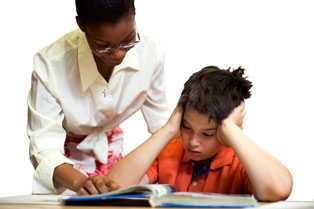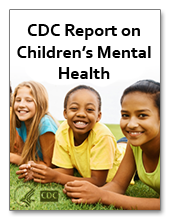Learning Disorder
Many children may struggle in school with some topics or skills from time to time. When children try hard and still struggle with a specific set of skills over time, it could be a sign of a learning disorder. Having a learning disorder means that a child has difficulty in one or more areas of learning, even when overall intelligence or motivation is not affected.

Some of the symptoms of learning disorders are
- Difficulty telling right from left
- Reversing letters, words, or numbers, after first or second grade
- Difficulties recognizing patterns or sorting items by size or shape
- Difficulty understanding and following instructions or staying organized
- Difficulty remembering what was just said or what was just read
- Lacking coordination when moving around
- Difficulty doing tasks with the hands, like writing, cutting, or drawing
- Difficulty understanding the concept of time
Examples of learning disorders include
- Dyslexia – difficulty with reading
- Dyscalculia – difficulty with math
- Dysgraphia – difficulty with writing
Children with learning disorders may feel frustrated that they cannot master a subject despite trying hard, and may act out, act helpless, or withdraw. Learning disorders can also be present with emotional or behavioral disorders, such as attention-deficit/hyperactivity disorder (ADHD), or anxiety. The combination of problems can make it particularly hard for a child to succeed in school. Properly diagnosing each disorder is crucial, so that the child can get the right kind of help for each.
Treatment for learning disorders
Children with learning disorders often need extra help and instruction that are specialized for them. Having a learning disorder can qualify a child for special education services in school. Schools usually do their own testing for learning disorders to see if a child needs intervention. An evaluation by a healthcare professional is needed if there are other concerns about the child’s behavior or emotions. Parents, healthcare providers, and the school can work together to find the right referrals and treatment.
Helping children with learning and attention issues
What every parent should know…
Children with specific learning disabilities are eligible for special education services or accommodations at school under the Individuals with Disabilities in Education Act (IDEA) and an anti-discrimination law known as Section 504.
Learn more about education services and accommodations
Get help from your state’s Parent Training and Information Center
The role of healthcare providers
Healthcare providers can play an important part in collaborating with schools to help a child with learning disorders or other disabilities get the special services they need. The American Academy of Pediatrics (AAP) has created a report that describes the roles that healthcare providers can have in helping children with disabilities, including learning disorders:
- Identifying children in need of early intervention or special education services.
- Sharing relevant information with early intervention or school personnel.
- Meeting with early intervention or school personnel and parents or guardians.
- Using early intervention or school information in medical diagnostic or treatment plans.
- Working within an early intervention, school, or school-based health clinic.
- Working at an administrative level to improve school functioning around children with special needs.
- Page last reviewed: February 1, 2017
- Page last updated: January 3, 2017
- Content source:
- Division of Human Development and Disabilities, National Center on Birth Defects and Developmental Disabilities, Centers for Disease Control and Prevention



 ShareCompartir
ShareCompartir